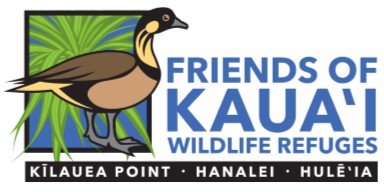A Growing Refuge System Needs Funding
Despite only minimal increases in funding for the past 12 years, the Refuge System has added 14 new refuge units, hundreds of millions of acres of marine national monuments, and new services that have dramatically increased visitation. While this growth has enhanced the Refuge System, it also puts increased pressure on an already stressed and underfunded Service.
Funding for FY2022 (October 1, 2021 to September 30, 2022) totaled just $584 million. This represents an increase over the prior year’s funding, but it was not nearly enough to cover all of the Service’s costs. Over the last decade, the National Wildlife Refuge System has lost over 1,000 staff members due to budget reductions.
The National Wildlife Refuge Association estimates that the full funding amount needed for the Refuge System is over one billion dollars annually. Increased funding needs, paired with a stagnant budget that has not kept up with inflation, has led to an attrition in the fulfillment of habitat maintenance and the ability to keep refuges open to the public.
Staffing Levels in Constant Decline
Nearly 1,100 positions have been lost since FY2010 when the budget was last funded at nearly the same level as today – an enormous 25% loss in capacity. Each refuge should be staffed with a refuge manager, biologists, wage grade staff, visitor services staff, and specialists. However, few refuges are fully staffed, and more than half of them have zero staff on site – with many refuges closed to the public and left completely unmanaged.
As an example of these dire challenges, there are approximately just 50 law enforcement officers patrolling 850 million acres of land and water. Excluding the water acres, each federal refuge officer is responsible for patrolling an average of 400,000 acres. In many cases, like in the State of Hawaiʻi, one officer alone is currently responsible for an entire state, with refuge units hours away from each other.
Maintenance and Conservation Planning Backlog
The Refuge System also has an operations and deferred maintenance backlog of over $1.15 billion. Since 2005, refuges – including ours – have been battered by many natural disasters, including droughts, floods, tornadoes, and hurricanes, sustaining over $790 million in damages. A backlog of 200 Comprehensive Conservation Plans (CCP) has also strained the System as funding for planning has largely been eliminated due to budget cuts. Planning is at the core of Refuge System management, but more than 40% of refuges have an outdated CCP or no plan at all. Increased funding for planning and management will allow the Service to begin to address this backlog and provide more of the tools it needs for active water management, habitat management and restoration, invasive species eradication and community education.
Volunteers Add Needed Capacity
Volunteers provide a significant part of the Refuge System workforce and participate in almost every aspect of refuge work. They provide free labor equaling 20% to the Refuge system workforce and account for over a million hours of work every year. Here, at our Refuge, they provide an invaluable level of support. Learn more about how you can help by visiting us here.
The Funding Process
The vast majority of the funding of the National Wildlife Refuge System comes from the Operations and Maintenance fund, which is allocated through the Congressional appropriations process.
In a typical year, the appropriations cycle begins with the President’s Budget Request in February and ends when Congress finalizes their bills and the President signs it into law by September 30th, the last day of the fiscal year. In recent years, however, this process has not run as smoothly as we might like, and funding for the National Wildlife Refuge System has floundered under the weight of tight budgets, sliding deadlines, and lack of agreement in Washington, D.C. on the best way to fund public lands. Due these challenges, many times our local Refuges do not receive their budget allocations until months into the fiscal year, delaying progress on key projects and planning.
Congressional Funding
The benefits of funding the National Wildlife Refuge System are almost immeasurable. Adequate funding provides restoration of vulnerable habitat, protection against poaching, well-regulated access to activities like hiking, fishing, and hunting, the management of invasive species, and so much more.
This funding also supports transportation-related issues across national wildlife refuges like trail and road maintenance, consistent signage, and railways. Improvements in transportation funding result in a better experience for visitors and a safer environment for species on national wildlife refuges.
Across the National Refuge System are nearly 300 threatened or endangered species and thousands of other unique species that rely on the efforts of the Refuge System to prosper. Protecting these species and their habitats provides the American public with $33 billion in clean water and other environmental benefits, in addition to a major return on investment. Every dollar appropriated to the Refuge System returns an average of $4.87 to local economies along with 41,000 jobs and $3.2 billion in economic output each year.
A Path Forward
The National Wildlife Refuge Association is pleased to see a sustained commitment by the Biden Administration to markedly increase funding for the National Wildlife Refuge System and they have pledged to continue to advocate in Congress to help deliver the funding needed by the Refuge System to fulfill its mission. Please continue to follow their work and lend your voice in support of increased funding at the national level for the work of our refuges locally and across the country.
View a Fact Sheet provided by the National Wildlife Refuge Association


